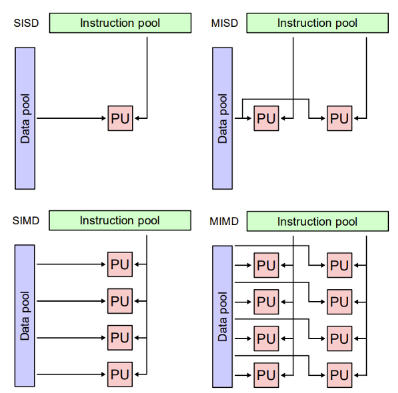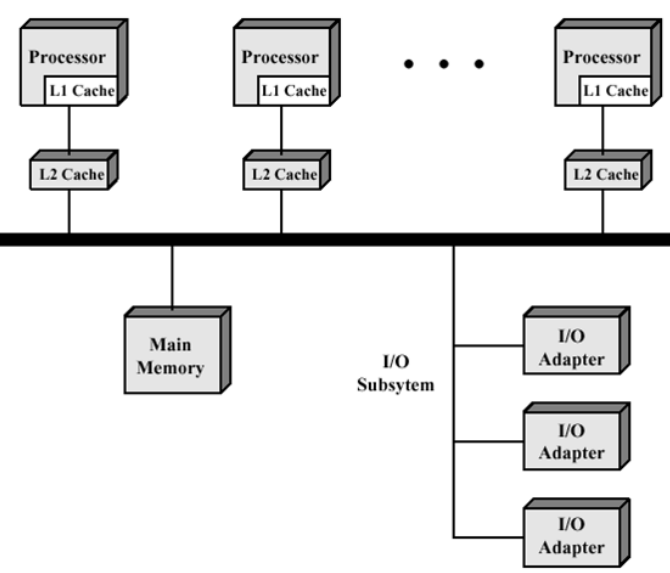Parallel Computing
1/7
Earn XP
Description and Tags
Name | Mastery | Learn | Test | Matching | Spaced |
|---|
No study sessions yet.
8 Terms
Flynn’s Taxonomy
Classification of computer architectures
Four classifications:
SISD - Single Instruction Single Data
MISD - Multiple Instruction Single Data
SIMD - Single Instruction Multiple Data
MIMD - Multiple Instruction Multiple Data

SIMD Extensions
SIMD processing - do same thing to many data objects
64-245 bit words are large enough for many separate bytes inside
Needs special software and CPU hardware e.g. streaming SIMD extensions (SSE)
Streaming SIMD Extensions (SSE) uses
Uses:
Image processing - multiple pixels at a time
Video processing - processing blocks
Array/vector processing
Text processing - especially XML
Offers general speed ups - does depend on application
Symmetric Multiprocessors (SMP)
MIMD system
Multiple CPUs share main memory and I/O
Increases performance
Scalable until bus is saturated

Heterogeneous Multi-processing
Combine big performance cores with small energy efficient cores
Core used determined by task requirements
Simultaneous Multithreading (SMT)
Hardware multi-threading on superscalar CPUs
One physical core used logically as two
Executes multiple instructions at the same time using redundant execution units in processor
Data parallelism
split data to make independent parallel tasks
Task parallelism
Split code up to run on separate threads, cores etc